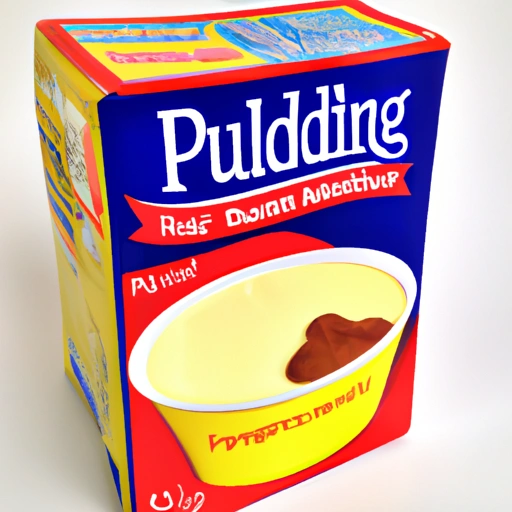Instant Pudding
Description

Instant pudding is a pre-packaged convenience food that offers a quick and effortless way to prepare pudding. It typically comes in the form of a powdered mix that, when combined with milk or another liquid, thickens into a creamy dessert without the need for cooking or lengthy preparation. Instant pudding is available in a variety of flavors, ranging from classic options like chocolate, vanilla, and butterscotch to more exotic tastes such as coconut, lemon, and pistachio.
Measurements for instant pudding can vary depending on the recipe, but a common packet size is 3.4 ounces (96 grams) in American measurements, which typically serves four. European recipes may use metric units such as grams or milliliters for liquid measurements.
Common uses
Instant pudding is commonly used as a dessert on its own or as a component in a variety of sweet dishes. It can be eaten plain, topped with whipped cream, or layered in trifles. Instant pudding is also a popular filling for pies, cakes, and pastries, and it serves as a base for more elaborate desserts such as mousses and cream pies.
Nutritional value
Calories
A typical serving of instant pudding (about 1/2 cup prepared) contains approximately 90 to 150 calories, depending on the flavor and added ingredients.
Protein
Instant pudding generally provides 1 to 2 grams of protein per serving when prepared with milk.
Fat
The fat content can range from 0 grams in sugar-free or fat-free versions up to 3 grams in full-fat varieties.
Carbohydrates
Carbohydrates in a serving of instant pudding are mostly from sugars and can vary from 20 to 30 grams, with sugar-free options containing less.
Vitamins
While not a significant source of vitamins, some types of instant pudding may contain small amounts of vitamin A or calcium, particularly if prepared with milk.
Minerals
When made with milk, instant pudding provides calcium and may also provide small amounts of other minerals like potassium.
Health benefits
Instant pudding can be part of a balanced diet when consumed in moderation. Preparing it with milk can contribute to your daily intake of calcium and protein. Sugar-free varieties offer a dessert option for those looking to reduce their sugar intake.
Potential risks
As with many processed foods, instant pudding mixes may contain additives, artificial flavors, and preservatives that some individuals might want to avoid. Additionally, high-sugar versions can contribute to excessive calorie intake. Individuals with dietary restrictions or allergies should read labels carefully, as some mixes may contain allergens such as milk, wheat, or nuts.
Common recipes
Instant pudding is used in a variety of recipes including chocolate pudding pie, vanilla pudding cake, and butterscotch parfait. It's also a key ingredient in banana pudding, bread pudding, and various no-bake desserts.
Cooking methods
While instant pudding itself does not require cooking, it is often used in baked goods or cooked desserts that incorporate the prepared pudding as a component.
Pairing with other ingredients
Instant pudding pairs well with fruit, cookies, cake, and pastry. It is often combined with ingredients like fresh berries, sliced bananas, graham crackers, and chocolate chips to enhance its flavor and texture.
Summary
Instant pudding is a versatile and convenient dessert ingredient that simplifies the process of making sweet treats. It is widely used in a variety of recipes to create quick, tasty, and satisfying desserts. With options for those watching their sugar intake and an array of flavors to choose from, instant pudding continues to be a favorite for both novice cooks and experienced chefs around the globe.